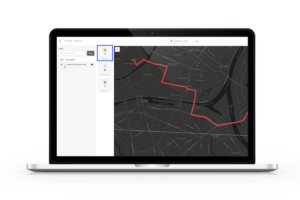In this article PTV looks at the new digital solutions available to traffic managers today, including AI traffic modeling systems that help to enhance traffic flows in real time,with self-learning forecasts for the next 30 to 120 minutes
Advancing the digital transformation and harnessing its potential is not only on the agenda in the world’s major cities but is also a high priority for most smaller towns and municipalities. The envisioned smart city of the future hinges on intelligent and interconnected systems, with transportation being a focal point.
According to a recent study, intelligent transportation systems (ITS) could potentially save cities up to US$277bn by 2025, predominantly by curbing congestion and emissions while bolstering road safety. However, smaller cities and regions, constrained by limited resources, often encounter hurdles in embracing digital systems for monitoring and proactively managing traffic flows.
Processing data flows
In today‘s mobility sector, large amounts of data are generated daily, presenting myriad opportunities to enhance mobility efficiency. Roadway sensors, for instance, offer more comprehensive data sets on traffic flows than ever before, facilitating real-time detection of vehicles and pedestrians, including trajectory, vehicle classification, near-miss events, red-light running, excessive vehicle queuing, and other critical roadway insights.
Advanced traffic management solutions further process the diverse mobility data from various sources, enabling the monitoring and proactive control of traffic flows. Cities such as Vienna or Taichung rely on PTV Optima, a globally recognized standard software for traffic operations management.
Nevertheless, smaller towns or communities, lacking the time or resources to establish and maintain advanced traffic management infrastructures, often lag in the realm of digitalization.
“With these cities and road authorities in mind, we designed PTV Flows,” explained Christian U Haas, CEO of PTV Group, part of Umovity. “This cloud-based and AI-powered tool enables cities and road authorities to proactively manage traffic flows even without access to advanced traffic management infrastructures or detectors.”
What is PTV Flows?
PTV Flows embeds detailed maps and floating car data (FCD) from major providers such as TomTom that are updated automatically and have extensive coverage. Using machine learning and state-of-the-art algorithms, the cost-effective solution analyzes historical and current speeds as well as specific KPIs monitoring zones or corridors. By identifying patterns and trends, the self-learning system generates forecasts for the next 30 to 120 minutes. Automatic and predictive alerts enable traffic operators to anticipate potential issues and take proactive measures to mitigate congestion. Additionally, relevant stakeholders, including law enforcement agencies, can receive immediate notifications.

Christian U Haas emphasized, “PTV Flows simplifies the initial steps for cities and municipalities towards transport digitalization. This lightweight tool will revolutionize their daily operations. PTV Flows not only empowers operators to proactively manage traffic, thereby reducing delays and enhancing safety but also enhances overall transport system efficiency.”
Beyond traffic management centers, the tool can cater to a broad spectrum of use cases such as real-time monitoring of construction sites or evaluating the network performance of motorways or automating activation of traffic schemes using predictive alerts.

The software can also be easily and flexibly adapted to different user needs. Installation is hassle-free as PTV Flows operates directly from the browser or seamlessly integrates via API into existing systems. Furthermore, integration with Econolite‘s Saas product Centracs Mobility will be available soon enabling advanced prediction and control within the same operational environment.
Visitors of Intertraffic Amsterdam on April 16-19 can explore PTV Flows at booth #216, hall 2 (02.216).





